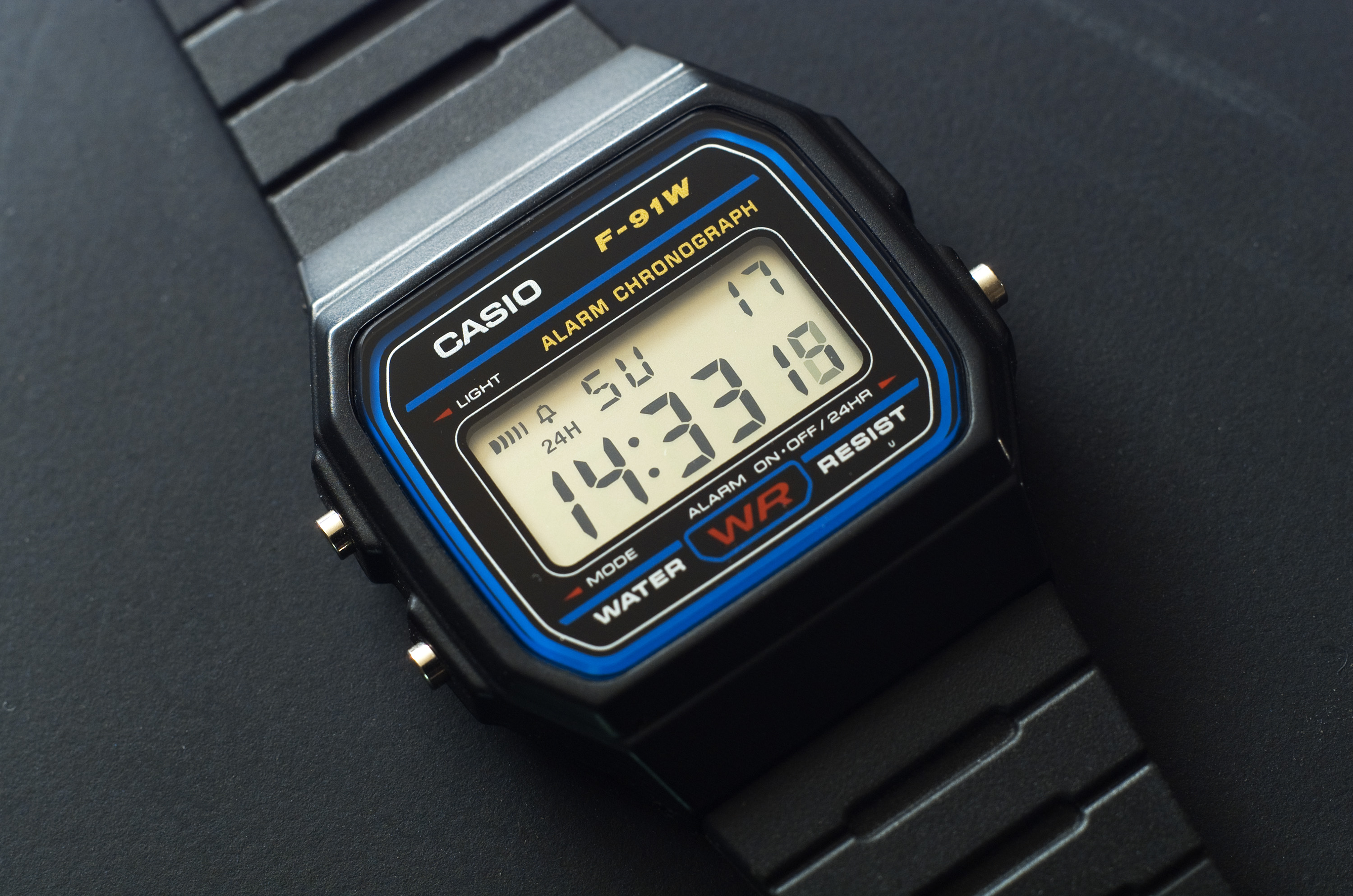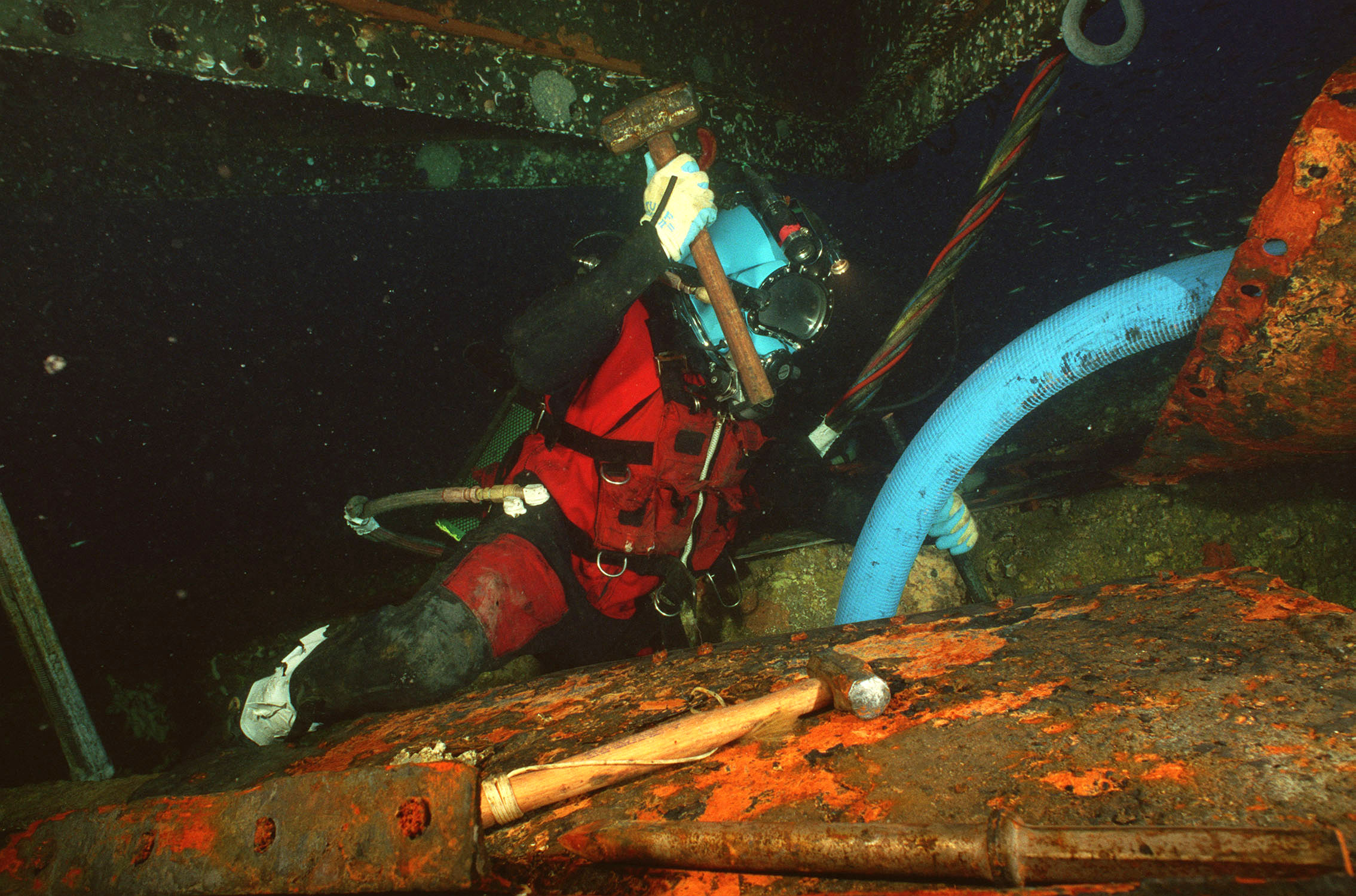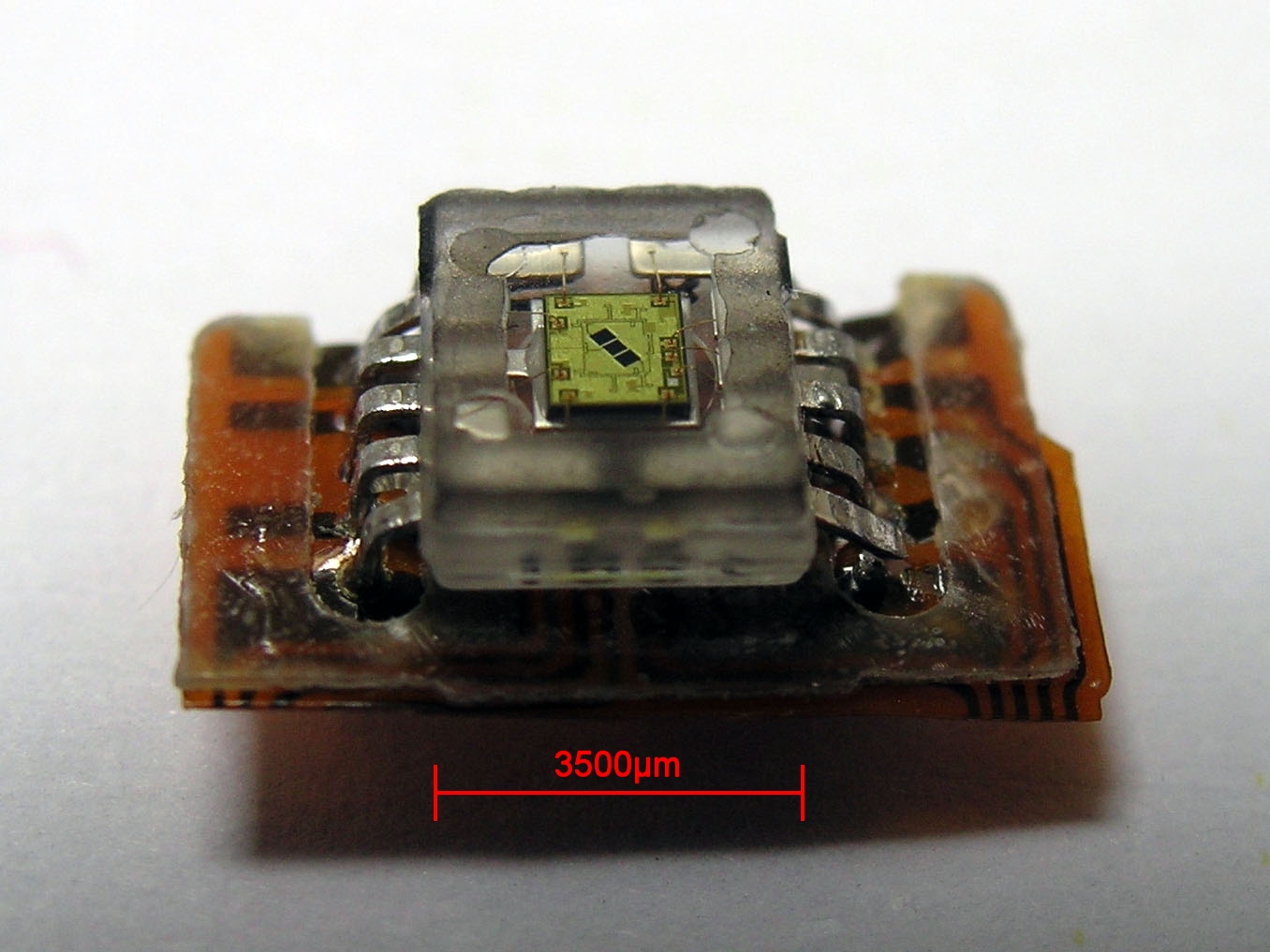|
Eco-Drive
Eco-Drive is a model range of watches manufactured and marketed worldwide by Citizen Watch Co., Ltd., powered primarily by light. As of 2007, the company estimated the drive system had eliminated the disposal of ten million batteries in North America. Citizen introduced the Eco-Drive line to Asia, Latin America, and Europe in 1995 and to the United States in April, 1996. The Eco-Drive concept introduced several technical refinements over previous solar powered watches, including light-capturing cells that could be made virtually invisible behind the dial instead of highly conspicuous, enhancing the appearance of the watch. History Eco-Drive concept The technical platform that made the Eco-Drive concept possible was the Eco-Drive caliber 7878 movement. This movement was the first light-powered movement where the solar cells could be mounted under the dial. Previous light powered watches from Citizen and other manufacturers had the solar cell(s) mounted directly on the dial. ... [...More Info...] [...Related Items...] OR: [Wikipedia] [Google] [Baidu] |
Citizen Holdings
, also known as the Citizen Group, is an electronics company primarily known for its watches and is the core company of a Japanese global corporate group based in Nishitokyo, Tokyo, Japan. In addition to Citizen brand watches, it is the parent of American watch company Bulova. Beyond watches, Citizen also manufactures calculators, printers, health care devices, and precision CNC machining equipment. History The company was founded in 1930 by Japanese and Swiss investors. It took over Shokosha Watch Research Institute (founded in 1918) and some facilities of the assembly plant opened in Yokohama in 1912 by the Swiss watchmaker Rodolphe Schmid. The brand Citizen was first registered in Switzerland by Schmid in 1918 for watches he sold in Japan. The development of this brand was supported in the 1920s by Count Gotō Shinpei with his hope that watches could become affordable to the general public. The growth of Citizen until World War II relied on technology transfer from Switzerl ... [...More Info...] [...Related Items...] OR: [Wikipedia] [Google] [Baidu] |
Quartz Clock
Quartz clocks and quartz watches are timepieces that use an electronic oscillator regulated by a quartz crystal to keep time. The crystal oscillator, controlled by the resonant mechanical vibrations of the quartz crystal, creates a signal with very precise frequency, so that quartz clocks and watches are at least an order of magnitude more accurate than mechanical clocks. Generally, some form of digital logic counts the cycles of this signal and provides a numerical time display, usually in units of hours, minutes, and seconds. As the advent of solid-state digital electronics in the 1980s allowed them to be made more compact and inexpensive, quartz timekeepers became the world's most widely used timekeeping technology, used in most clocks and watches as well as computers and other appliances that keep time. Explanation Chemically, quartz is a specific form of a compound called silicon dioxide. Many materials can be formed into plates that will resonate. However, quart ... [...More Info...] [...Related Items...] OR: [Wikipedia] [Google] [Baidu] |
Diving Watch
A diving watch, also commonly referred to as a diver's or dive watch, is a watch designed for underwater diving that features, as a minimum, a water resistance greater than , the equivalent of . The typical diver's watch will have a water resistance of around , though modern technology allows the creation of diving watches that can go much deeper. A true contemporary diver's watch is in accordance with the ISO 6425 standard, which defines test standards and features for watches suitable for diving with underwater breathing apparatus in depths of or more. Watches conforming to ISO 6425 are marked with the word DIVER'S to distinguish ISO 6425 conformant diving watches from watches that might not be suitable for actual scuba diving. To a large extent the diver's watch has been superseded by the personal dive computer, which provides an automatically initiated dive timer function along with real-time decompression computation and other (optional) functions. History The history of ... [...More Info...] [...Related Items...] OR: [Wikipedia] [Google] [Baidu] |
Chronograph
A chronograph is a specific type of watch that is used as a stopwatch combined with a display watch. A basic chronograph has hour and minute hands on the main dial to tell the time, a small seconds hand to tell that the watch is running, and a seconds hand on the main dial usually equipped with a sweeping movement for precision accompanied by a minutes sub dial for the stopwatch. Another sub dial to measure the hours of the stopwatch may also be included on a chronograph. The stopwatch can be started, stopped, and reset to zero at any time by the user by operating pushers usually placed adjacent to the crown. More complex chronographs often use additional complications and can have multiple sub-dials to measure more aspects of the stopwatch such as fractions of a second as well as other helpful things such as the moon phase and the local 24-hour time. In addition, many modern chronographs include tachymeters on the bezels for rapid calculations of speed or distance. Louis M ... [...More Info...] [...Related Items...] OR: [Wikipedia] [Google] [Baidu] |
Automatic Quartz
Automatic quartz is a collective term describing watch Movement (clockwork), movements that combine a self-winding rotor mechanism (as used in Automatic watch, automatic mechanical watches) to generate electricity with a Piezoelectricity, piezoelectric Crystal oscillator, quartz crystal as its timing element. Such movements aim to provide the advantages of quartz without the inconvenience and environmental impact of batteries. Several manufacturers employ this technique. Mode of operation A rotating pendulum inside the case is attached to a relatively large gear which meshes with a very small pinion. As the wearer moves, the pendulum turns and spins the pinion at a very high speed - up to 100,000 Revolutions per minute, rpm. This is coupled to a miniature electrical generator which charges a storage device which is a capacitor(s) or a rechargeable Button cell, battery. A typical full charge will last between two weeks and six months. Applications Seiko Japanese company Seiko ... [...More Info...] [...Related Items...] OR: [Wikipedia] [Google] [Baidu] |
Watch
A watch is a timepiece carried or worn by a person. It is designed to maintain a consistent movement despite the motions caused by the person's activities. A wristwatch is worn around the wrist, attached by a watch strap or another type of bracelet, including metal bands or leather straps. A pocket watch is carried in a pocket, often attached to a chain. A stopwatch is a type of watch that measures intervals of time. During most of their history, beginning in the 16th century, watches were mechanical devices, driven by clockwork, powered by winding a mainspring, and keeping time with an oscillating balance wheel. These are known as '' mechanical watches''. In the 1960s the electronic ''quartz watch'' was invented, powered by a battery and keeping time with a vibrating quartz crystal. By the 1980s it had taken over most of the watch market, in what became known as the quartz revolution (or the quartz crisis in Switzerland, whose renowned watch industry it decima ... [...More Info...] [...Related Items...] OR: [Wikipedia] [Google] [Baidu] |
Water Resistant Mark
Water Resistant is a common mark stamped on the back of wrist watches to indicate how well a watch is sealed against the ingress of water. It is usually accompanied by an indication of the static test pressure that a sample of newly manufactured watches were exposed to in a leakage test. The test pressure can be indicated either directly in units of pressure such as bar, atmospheres, or (more commonly) as an equivalent water depth in metres (in the United States sometimes also in feet). An indication of the test pressure in terms of water depth does not mean a water-resistant watch was designed for repeated long-term use in such water depths. For example, a watch marked 30 metres water resistant cannot be expected to withstand activity for longer time periods in a swimming pool, let alone continue to function at 30 metres under water. This is because the test is conducted only once using static pressure on a sample of newly manufactured watches. As only a small sample is teste ... [...More Info...] [...Related Items...] OR: [Wikipedia] [Google] [Baidu] |
Solar Powered Watch
A solar-powered watch or light-powered watch is a watch that is powered entirely or partly by a solar cell. History A model produced from 1978 by the Riehl Time Corporation was simply described as running on solar power, but having "silicon power cells" that "absorb energy from natural sunlight, daylight, or an ordinary light bulb". Some of the early solar watches of the 1970s had innovative and unique designs to accommodate the array of photovoltaic solar cells needed to power them (Synchronar, Nepro, Sicura and some models by Cristalonic, Alba, Rhythm, Seiko and Citizen). In 1996, Citizen started to sell analog light-powered watches under the Eco-Drive name. Since their introduction, photovoltaic devices have greatly improved their efficiency and thereby their capacity. Watchmakers have developed their technology such that solar-powered watches had by 2009 become a major part of their range. Several other watch manufacturers also use solar technology, such as Orient. [...More Info...] [...Related Items...] OR: [Wikipedia] [Google] [Baidu] |
Thermoelectricity
The thermoelectric effect is the direct conversion of temperature differences to electric voltage and vice versa via a thermocouple. A thermoelectric device creates a voltage when there is a different temperature on each side. Conversely, when a voltage is applied to it, heat is transferred from one side to the other, creating a temperature difference. This effect can be used to generate electricity, measure temperature or change the temperature of objects. Because the direction of heating and cooling is affected by the applied voltage, thermoelectric devices can be used as temperature controllers. The term "thermoelectric effect" encompasses three separately identified effects: the Seebeck effect (temperature differences cause electromotive forces), the Peltier effect (thermocouples create temperature differences), and the Thomson effect (the Seebeck coefficient varies with temperature). The Seebeck and Peltier effects are different manifestations of the same physical proces ... [...More Info...] [...Related Items...] OR: [Wikipedia] [Google] [Baidu] |
Saturation Diving
Saturation diving is an ambient pressure diving technique which allows a diver to remain at working depth for extended periods during which the body tissues become solubility, saturated with metabolically inert gas from the breathing gas mixture. Once saturated, the time required for Decompression (diving), decompression to surface pressure will not increase with longer exposure. The diver undergoes a single decompression at the end of the exposure of several days to weeks duration. The ratio of productive working time at depth to unproductive decompression time is thereby increased, and the health risk to the diver incurred by decompression is minimised. When a diver breathes pressurized gas, metabolically inert gases are needed in the mixture to dilute oxygen to non-toxic levels. These gases dissolve into the body's tissues, but if they come out of solution too quickly during decompression, they form bubbles in the tissues which can cause decompression sickness ("the bends"), a ... [...More Info...] [...Related Items...] OR: [Wikipedia] [Google] [Baidu] |
Photocell
Photodetectors, also called photosensors, are devices that detect light or other forms of electromagnetic radiation and convert it into an electrical signal. They are essential in a wide range of applications, from digital imaging and optical communication to scientific research and industrial automation. Photodetectors can be classified by their mechanism of detection, such as the photoelectric effect, photochemical reactions, or thermal effects, or by performance metrics like spectral response. Common types include photodiode, photodiodes, phototransistor, phototransistors, and photomultiplier tube, photomultiplier tubes, each suited to specific uses. Solar cell, Solar cells, which convert light into electricity, are also a type of photodetector. This article explores the principles behind photodetectors, their various types, applications, and recent advancements in the field. History The development of photodetectors began with the discovery of the photoelectric effect by H ... [...More Info...] [...Related Items...] OR: [Wikipedia] [Google] [Baidu] |





